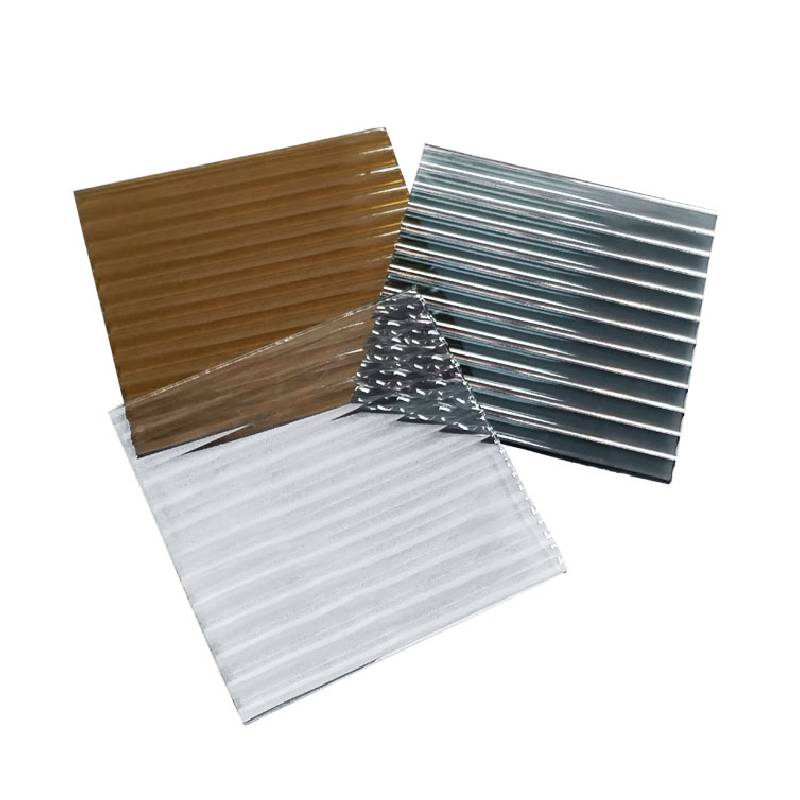Different Types of Tempered Glass An Overview
Tempered glass, also known as toughened glass, is a type of safety glass that has been heat-treated to enhance its strength and durability. This process involves heating the glass to a high temperature and then rapidly cooling it, which increases its resistance to impact and thermal stress. There are several different types of tempered glass, each with unique properties and applications. This article will explore the various types of tempered glass, their benefits, and their common uses.
1. Standard Tempered Glass
Standard tempered glass is the most common type, widely used in residential and commercial buildings. It is characterized by its ability to withstand sudden temperature changes and impacts. Standard tempered glass is typically four to five times stronger than regular glass of the same thickness. It is commonly used in windows, doors, shower enclosures, and glass walls. The safety feature of tempered glass is highlighted by its shattering into small, blunt pieces if broken, reducing the risk of injury.
2. Heat-Soaked Tempered Glass
Heat-soaked tempered glass undergoes an additional testing process to detect and minimize the risk of thermal fracture due to nickel sulfide inclusions. During this process, the glass is subjected to elevated temperatures, allowing any latent weaknesses to surface. Heat-soaked tempered glass is particularly advantageous in environments with significant temperature fluctuations. It is often used in large glass facades, skylights, and large windows where safety is paramount.
3. Laminated Tempered Glass
Laminated tempered glass consists of two or more pieces of tempered glass bonded together with an interlayer—typically made of polyvinyl butyral (PVB) or ethylene-vinyl acetate (EVA). This interlayer adds an extra level of safety, as it holds the glass fragments together in the event of breakage, reducing the risk of injury and providing additional security against intrusion. Laminated tempered glass is popular in applications such as storefronts, overhead glazing, and glass floors.
4. Decorative Tempered Glass
different types of tempered glass
Decorative tempered glass combines functionality with aesthetic appeal. It can be produced with various textures, patterns, or colors, making it an ideal choice for architectural and design applications. This type of glass is often used in partitions, railings, doors, and windows where visual impact is important without compromising safety. The tempering process ensures that the decorative elements do not affect the glass's strength or resistance to breakage.
5. Low-E Tempered Glass
Low emissivity (Low-E) tempered glass is designed to enhance energy efficiency by reflecting heat and ultraviolet light. The glass is coated with a thin layer of metallic oxide, which helps reduce heat transfer and improve insulation. This type of glass is especially beneficial in commercial buildings where energy conservation is a priority. Low-E tempered glass is commonly used in windows and curtain walls, contributing to the overall sustainability of a building.
6. Insulated Tempered Glass
Insulated tempered glass consists of two or more layers of tempered glass separated by an air space or gas-filled cavity. This design enhances thermal insulation and energy efficiency, making it a popular choice for residential and commercial windows. Insulated tempered glass reduces heat loss and minimizes condensation, contributing to a comfortable indoor environment. It is often used in exterior windows and façade systems.
7. Curved Tempered Glass
Curved tempered glass is manufactured by applying heat to standard tempered glass, enabling it to take on a curved shape without losing its strength. This type of glass is increasingly popular in modern architecture, offering both aesthetic and functional benefits. Curved glass is often used in skylights, partitions, and decorative elements, providing designers with creative freedom while ensuring safety and durability.
Conclusion
Tempered glass comes in various types, each tailored to meet specific needs in safety, aesthetics, and energy efficiency. From standard tempered glass to specialized options like laminated, low-E, and curved tempered glass, the versatility of this material makes it a popular choice in different applications. Understanding the unique properties of each type of tempered glass can help architects, builders, and consumers make informed decisions that enhance both the safety and aesthetics of their spaces. As technology advances, we can expect continuous innovations in glass manufacturing, further broadening the horizons of design and functionality in architecture.
 Afrikaans
Afrikaans  Albanian
Albanian  Amharic
Amharic  Arabic
Arabic  Armenian
Armenian  Azerbaijani
Azerbaijani  Basque
Basque  Belarusian
Belarusian  Bengali
Bengali  Bosnian
Bosnian  Bulgarian
Bulgarian  Catalan
Catalan  Cebuano
Cebuano  Corsican
Corsican  Croatian
Croatian  Czech
Czech  Danish
Danish  Dutch
Dutch  English
English  Esperanto
Esperanto  Estonian
Estonian  Finnish
Finnish  French
French  Frisian
Frisian  Galician
Galician  Georgian
Georgian  German
German  Greek
Greek  Gujarati
Gujarati  Haitian Creole
Haitian Creole  hausa
hausa  hawaiian
hawaiian  Hebrew
Hebrew  Hindi
Hindi  Miao
Miao  Hungarian
Hungarian  Icelandic
Icelandic  igbo
igbo  Indonesian
Indonesian  irish
irish  Italian
Italian  Japanese
Japanese  Javanese
Javanese  Kannada
Kannada  kazakh
kazakh  Khmer
Khmer  Rwandese
Rwandese  Korean
Korean  Kurdish
Kurdish  Kyrgyz
Kyrgyz  Lao
Lao  Latin
Latin  Latvian
Latvian  Lithuanian
Lithuanian  Luxembourgish
Luxembourgish  Macedonian
Macedonian  Malgashi
Malgashi  Malay
Malay  Malayalam
Malayalam  Maltese
Maltese  Maori
Maori  Marathi
Marathi  Mongolian
Mongolian  Myanmar
Myanmar  Nepali
Nepali  Norwegian
Norwegian  Norwegian
Norwegian  Occitan
Occitan  Pashto
Pashto  Persian
Persian  Polish
Polish  Portuguese
Portuguese  Punjabi
Punjabi  Romanian
Romanian  Russian
Russian  Samoan
Samoan  Scottish Gaelic
Scottish Gaelic  Serbian
Serbian  Sesotho
Sesotho  Shona
Shona  Sindhi
Sindhi  Sinhala
Sinhala  Slovak
Slovak  Slovenian
Slovenian  Somali
Somali  Spanish
Spanish  Sundanese
Sundanese  Swahili
Swahili  Swedish
Swedish  Tagalog
Tagalog  Tajik
Tajik  Tamil
Tamil  Tatar
Tatar  Telugu
Telugu  Thai
Thai  Turkish
Turkish  Turkmen
Turkmen  Ukrainian
Ukrainian  Urdu
Urdu  Uighur
Uighur  Uzbek
Uzbek  Vietnamese
Vietnamese  Welsh
Welsh  Bantu
Bantu  Yiddish
Yiddish  Yoruba
Yoruba  Zulu
Zulu 

